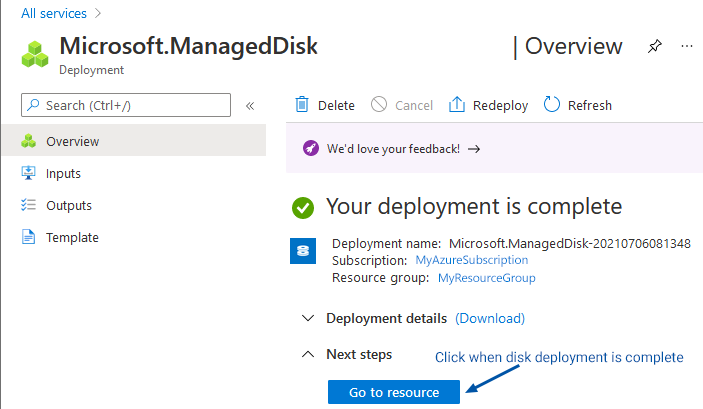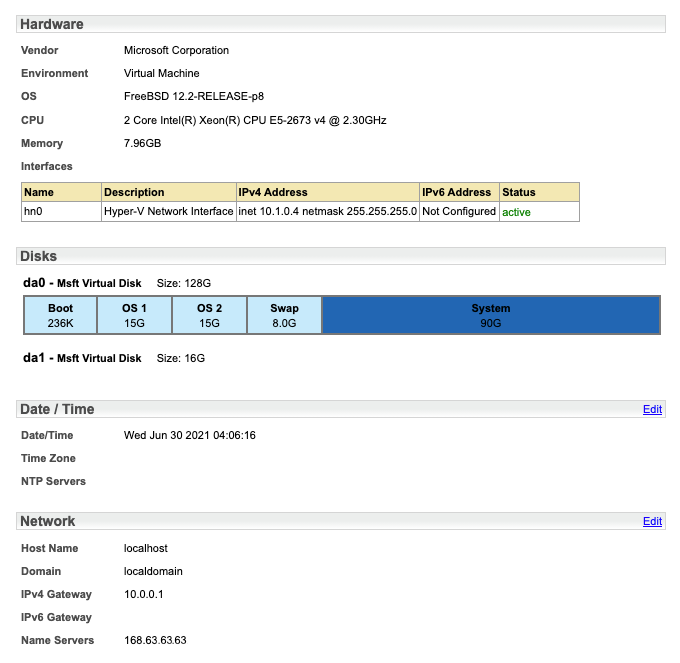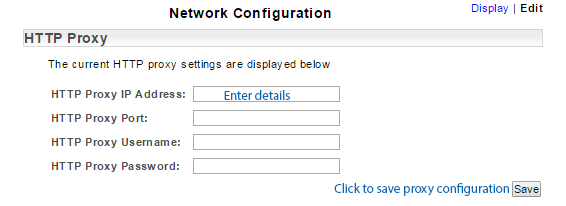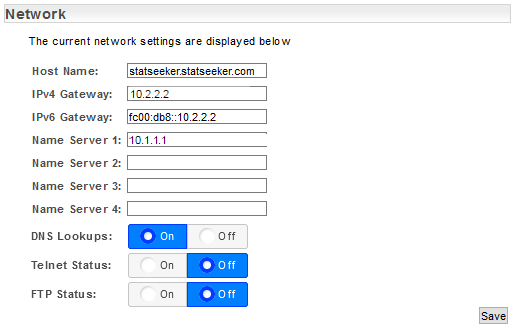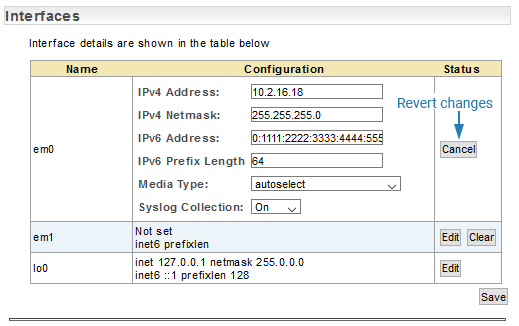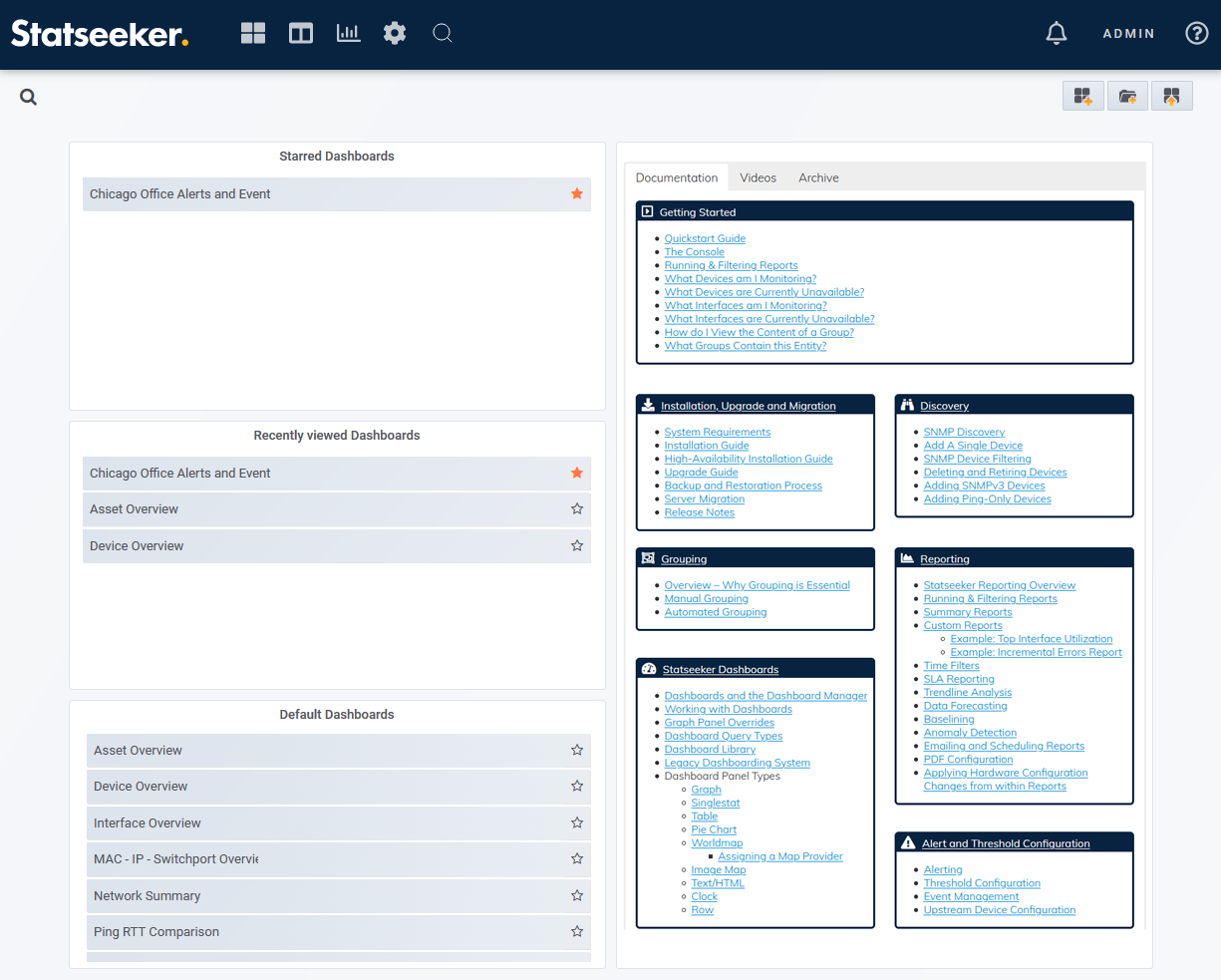Index
- Overview
- Requirements
- Uploading the Statseeker VHD
- Creating a Disk from the VHD
- Creating a Virtual Machine in Azure
- Server Licensing
- Server Summary and Final Steps
- Apply Service Packs
- Update Default Passwords
Overview
Statseeker can be deployed to the Microsoft Azure platform. This document outlines the process of creating an Azure Statseeker deployment from a Statseeker VHD provided by Statseeker Sales/Support.
For details on an Azure deployment using the Statseeker listing available in the Azure Marketplace, see Microsoft Azure Installation - Azure Marketplace Listing.
- Any screenshots presented, and processes described were accurate at the time of writing this document, but may become out-of-date due to changes made to the Azure platform
Requirements
This process requires that you have:
- An Azure subscription with previously configured Azure Resource Groups and Storage Accounts
- An Azure account for that subscription with access to the Azure portal and permission to create:
- Storage Containers
- Disks
- Virtual Machines
- A Statseeker v5.6.1 - v25.3 VHD image
- A valid Statseeker license
For access to Statseeker files/licenses suitable for your needs, please contact:
- New accounts: your Regional Sales Manager
- Existing Statseeker Accounts: Statseeker Technical Support
Uploading the Statseeker VHD
- Log in to your Azure Portal (https://portal.azure.com)
- From the list of Azure services, select Storage Account and select the Storage account that will be used to house your uploaded Statseeker.vhd
- Select Storage Explorer (preview) from the left-hand menu
- Select the Blob Container to house your uploaded Statseeker.vhd, or right-click BLOB CONTAINERS to create a new container

- Click Upload
- Select your previously downloaded Statseeker VHD
- Expand the Advanced section and set Blob type to Page Blob
- Click Upload

When the upload process is complete, the Statseeker VHD is available in your Azure portal.
Creating a Disk from the VHD
To create an Azure Disk from your uploaded Statseeker VHD:
- Log in to your Azure Portal (https://portal.azure.com)
- From the list of Azure services, select Disks and click Create Disk
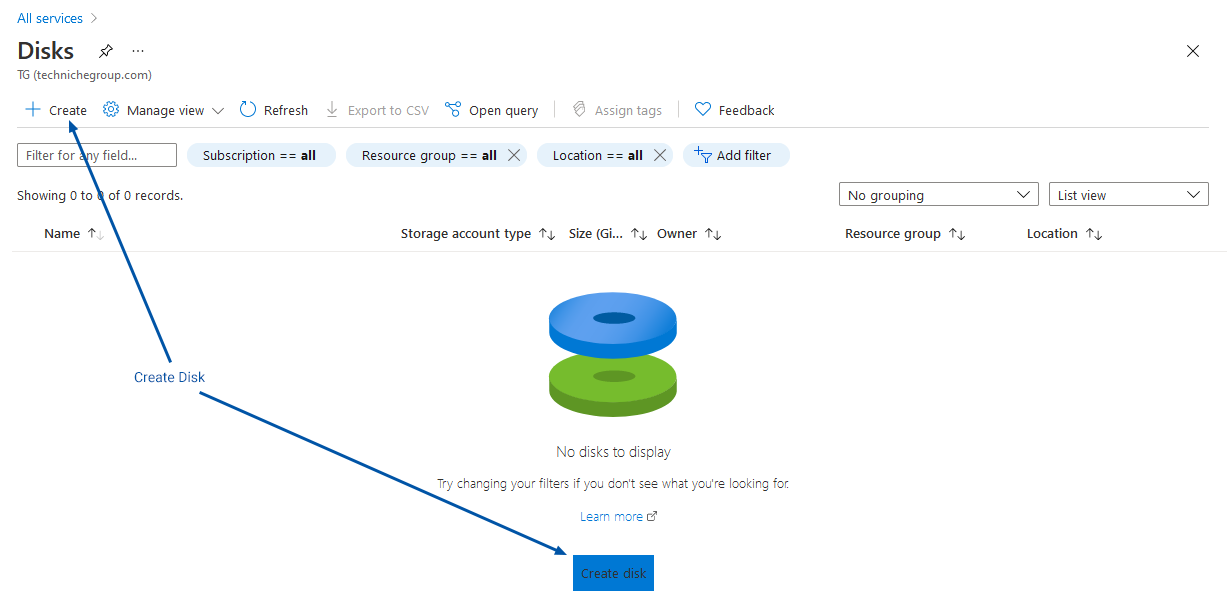
- Select the Subscription and Resource Group that will contain the disk
- Specify a Name for this disk, this will be referenced when configuring your Statseeker VM
- Update the default Region if needed, the region needs to be the same as that housing the VHD
- Set Storage type to Storage blob
- Set Subscription and Source blob to specify your uploaded Statseeker VHD
- Set OS = Linux
- Set VM generation:
- Statseeker v5.6.1 = Gen 1
- Statseeker v5.6.2 - v25.3 = Gen 2
Note: Statseeker v5.6.2+ requires the system firmware to be set to EFI; setting Azure VM Generation = Gen 2 satisfies this requirement. - Specify the desired size for your Statseeker server disk; refer for System Requirements for a guide
- Click Review and Create, review your configuration, and click Create when ready
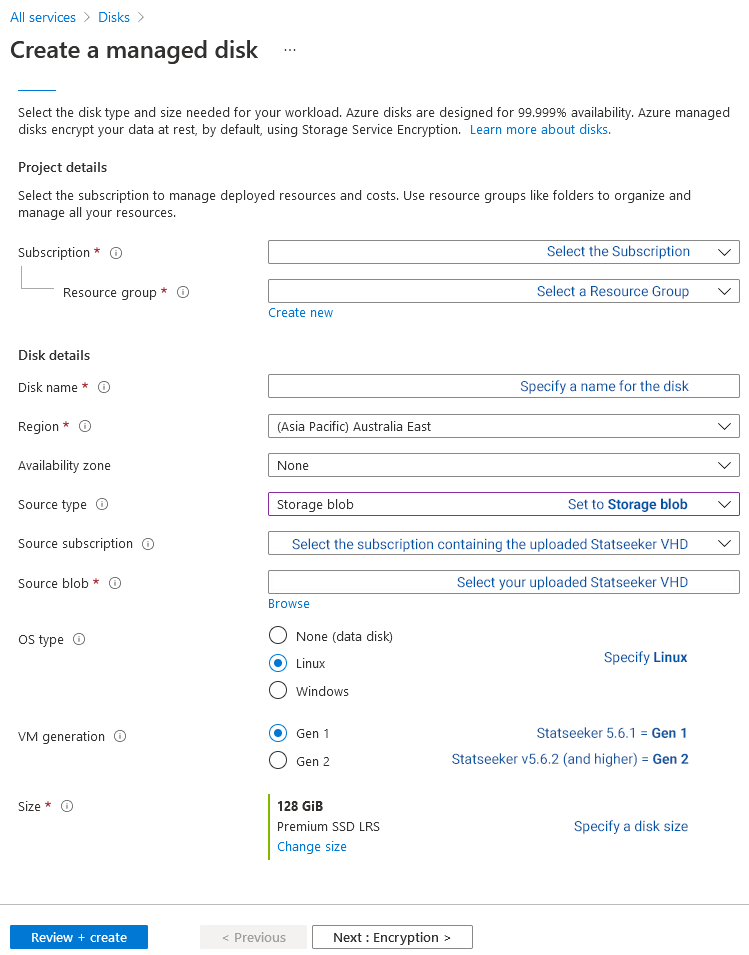
Your Statseeker disk will be deployed.
- Click Go to resource when the disk deployment is complete
Creating a Virtual Machine in Azure
To create your Statseeker VM:
- Log in to the Azure Portal (https://portal.azure.com)
- From the list of Azure services, select Disks
- Select your Statseeker disk and click Create VM

- Select a Subscription and Resource Group to house your Statseeker VM
- Name the VM
- Image should already be set to your Statseeker disk; update if needed
- Public Inbound Ports - SSH is needed to manage your Statseeker server, and HTTPS required for the Statseeker web UI
- All subsequent settings (located in other tabs) are optional, assign as required for your environment, but it is recommended that you leave Boot Diagnostics enabled
- Click Review + create
- Review your configuration and click Create when ready
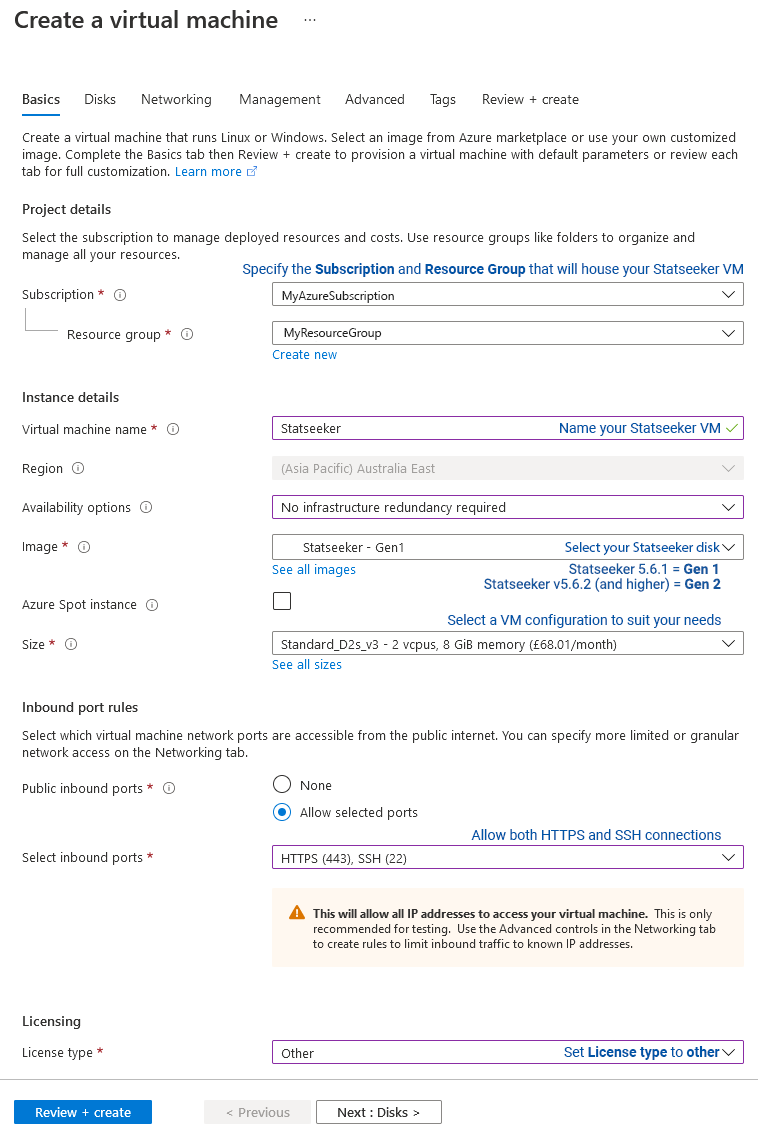
The progress of the creation process is logged on screen. When complete, click Go to resource.
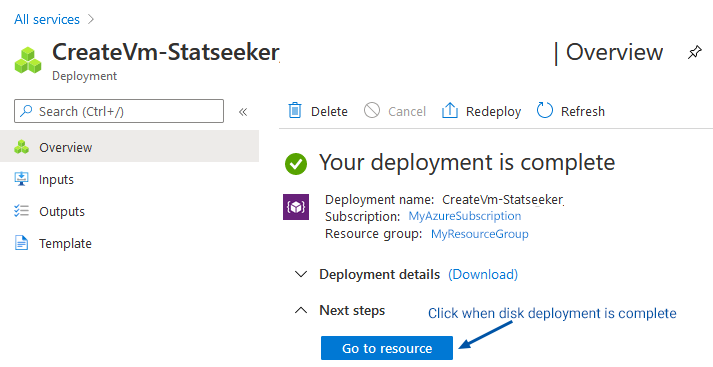
This will take you to the VM page for your new Statseeker server. The VM is built and the server has been booted, allow up to 10 minutes for the boot process to complete. To check on this process:
- Select Support + troubleshooting > Boot diagnostics
- Once you see a login prompt on the CLI, your server is ready
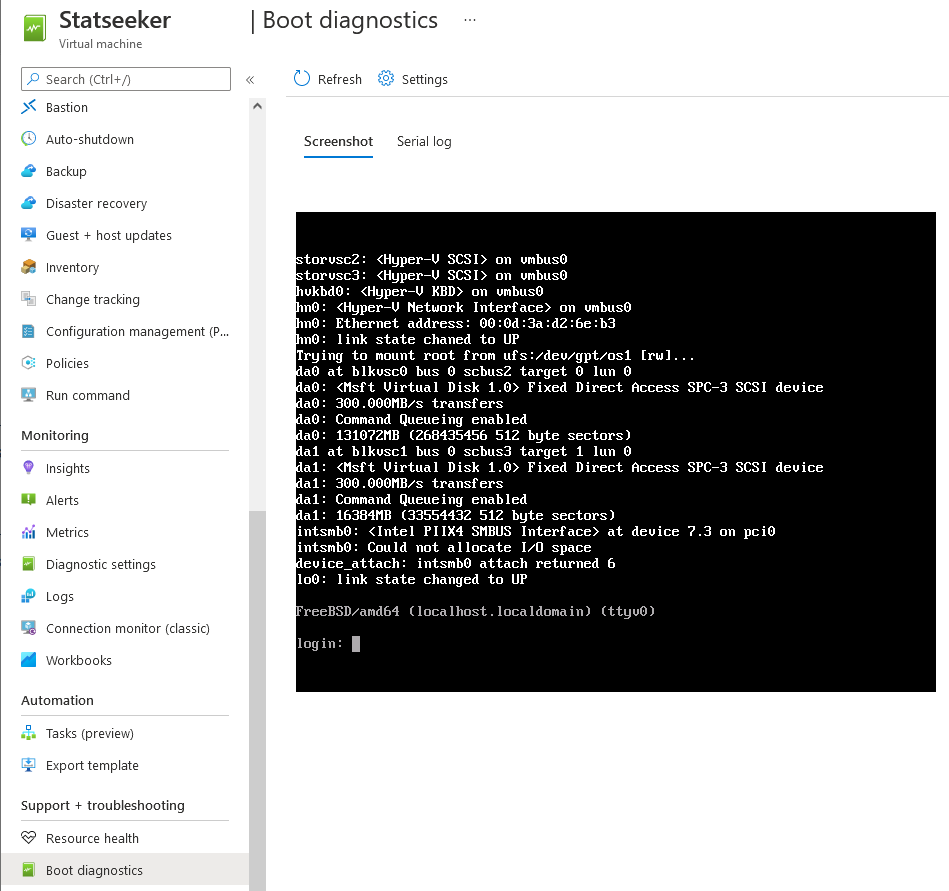
- Use your browser to hit the public IP (https) of the server
Server Licensing
By default, the Statseeker web server will use HTTPS in conjunction with a self-signed certificate. Modern browsers will view self-signed certificates as potentially suspect and post an alert prior to loading the Statseeker interface for the first time. To suppress any future alerts for that specific certificate:browser combination:
- Follow the browser prompts to acknowledge the risk and add an exception for the certificate
For details on how to upload and use alternative SSL certificates or configure the server to use HTTP instead, see Web Server Configuration.
You will then be prompted with a login screen.

- Select Sign in with username/password
- User Name - admin
- Password - the root user account password as specified during installation
Once logged in to the web interface, you will be prompted with the Statseeker License Management screen.

- Select Actions > Download a new License
- Enter your Server ID and click Download
Statseeker will process the new license and display your license details.
- Check the box in License Confirmation to accept your new license and click Apply
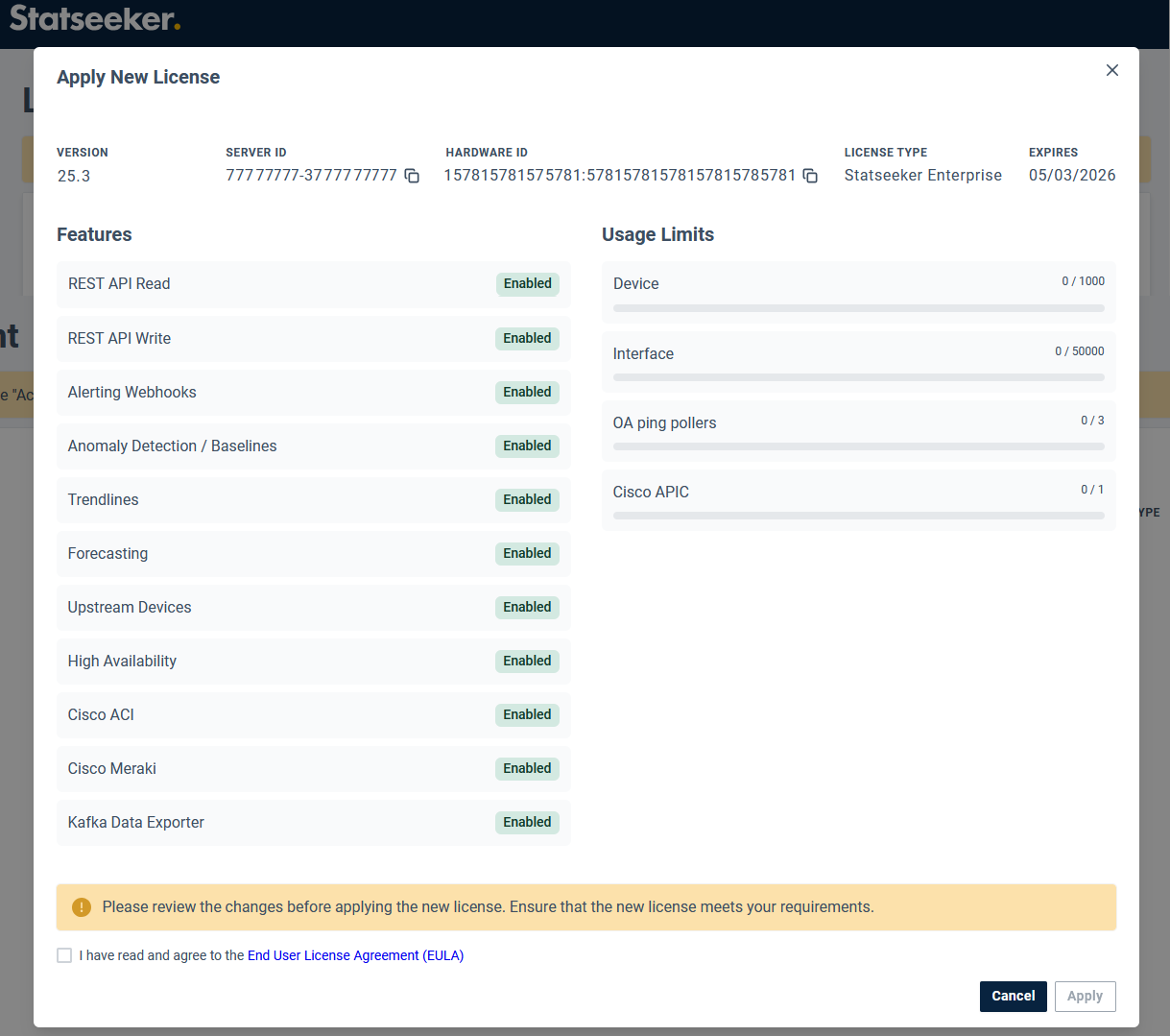
Multi-Disk Servers
If your Statseeker server has multiple disks, you will be given the option to assign another disk as the repository for Statseeker data. This screen will only be displayed if Statseeker detects more than one disk.

Prepare Secondary Disk for Statseeker Data
Optionally, you can store all Statseeker data on another disk on the server. Assigning a disk as the repository for Statseeker data will delete all current content on the disk.
To store Statseeker data on a second disk:
- Select the disk that will act as the Statseeker data repository - all existing data on this drive will be erased
- Click Save and Continue, then confirm the decision when prompted
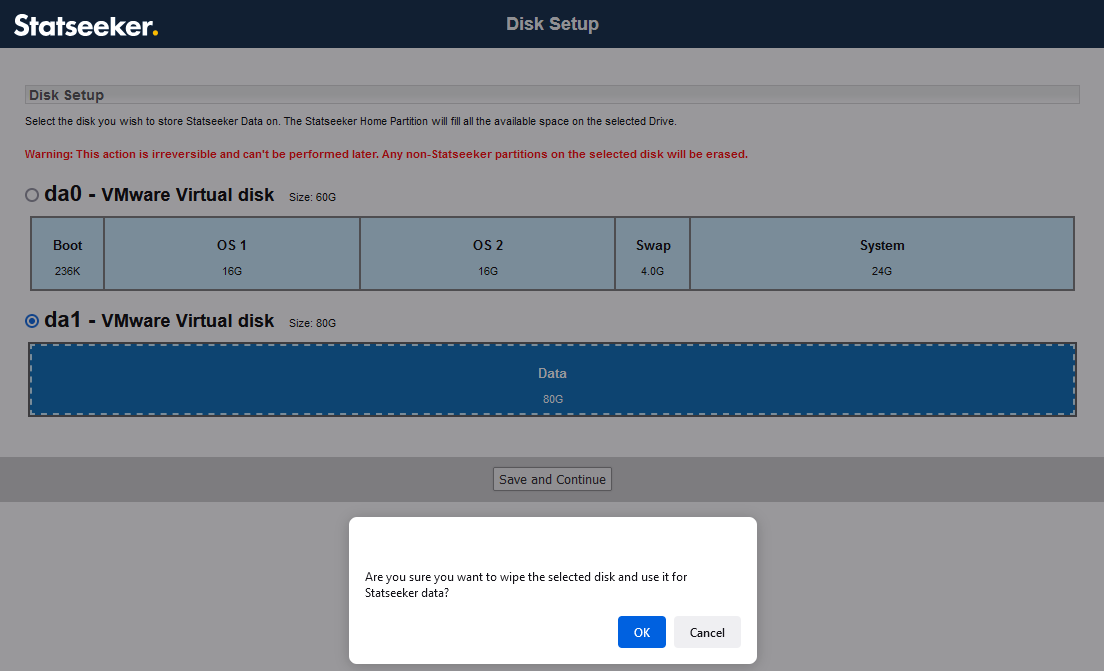
You may need to re-authenticate with the server once this process has been completed.
You will now be presented with the Server Summary screen, containing a range of details pertinent to your Statseeker installation.
Server Summary and Final Steps
The Server Summary details the configuration of your Statseeker server with options to update this configuration and initiate basic server administration tasks.
- Edit Server Date/Time - edit the server date/time/timezone, this action will reboot the server
- Edit NTP Configuration - edit and test the NTP server configuration
- Server Proxy Settings - configure an HTTP proxy connection for the Statseeker server
- Edit the Network Configuration - edit hostname, IP (primary interface), DNS settings, and enable telnet/ftp communications to the server
- Edit Interface Configuration
- Administration - access all Statseeker configuration and administration options
- Restore from Backup - restore a Statseeker server backup onto the server
- Create Users - create additional Statseeker server user accounts
- Run Network Discovery - direct Statseeker to begin monitoring your network
- Finish Setup - take no further action (all options are available from within Administration) and exit the setup process
Edit Server Date/Time
This is an optional step, adjust the settings if required.
- Click the associated Edit link on the Server Summary page
- Use the calendar control to edit the date and/or time
- Use the drop-down to modify the timezone for the server
- Click Save when done
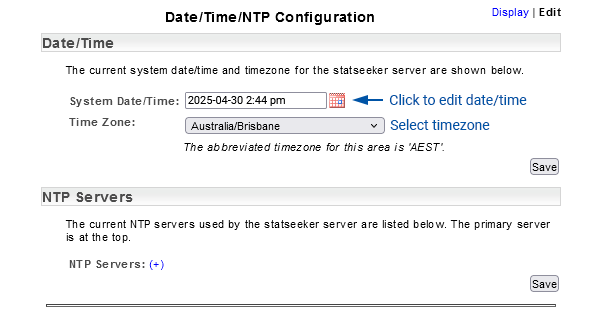
The configuration changes will be saved, and the server will be restarted to apply those changes.

Once the changes have been applied, you will be returned to the Date/Time/NTP Configuration screen (in Display mode) to confirm that the changes have been applied correctly.
Edit NTP Configuration
To edit the NTP server settings:
- Click the associated Edit link on the Server Summary page
- Enter the address of the NTP server to use
- Click the associated Delete button to remove unwanted NTP server entries
- Click Save when done
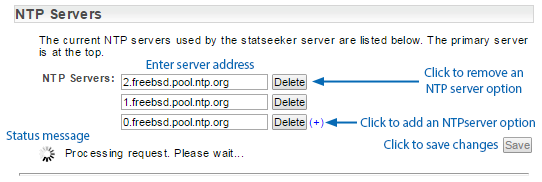
When you click Save, Statseeker will attempt to contact the specified NTP servers and:
- Inform you if it is unable to receive a response from the NTP server, no changes have been applied at this point
- If it receives a valid response from the NTP server, apply the changes and return the Date/Time/NTP Configuration screen (in Display mode), enabling a Test button that can be used to confirm the validity of the current configuration.
Configure an HTTP Proxy Connection
To add or edit the HTTP proxy configuration:
- Click the Network > Edit link on the Server Summary page
- Enter the required proxy server details
- Click Save to apply the configuration
Edit the Network Configuration
To edit the existing network configuration:
- Click the Network > Edit link on the Server Summary page
- Enter the required details
- Click Save to apply the configuration
Edit Interface Configuration
To edit the existing network configuration:
- Click the associated Edit link on the Server Summary page
- Click Edit to reconfigure the interface, optionally click Clear to remove the current configuration before editing

- Enter the required details
- Click Save to apply the configuration
- Click Close to return to the Server Summary
Administration
Administration is used to manage your Statseeker server and houses a large amount of functionality, including:
- Statseeker server licensing and configuration (operating system, web server, SSL certificates, authentication options, backups, custom packages, etc.)
- Network discovery and device management
- User accounts
- Group management
- Alerting and event management
- Server Maintenance and Troubleshooting
See Server Administration for additional information.
Restore from Backup
This option allows you to restore a previous Statseeker server backup onto the newly created server. The backup will restore both the Statseeker server configuration (optionally including SSL certificates) and network data (as recorded up until the backup was created)
For more information, see Backup and Restoration Processes.
Create Users (optional)
This option allows you to configure additional Statseeker user accounts, see User Accounts for details on account creation. This step can be skipped as user account creation is available from within Administration after installation is complete.
There are some limitations to creating user accounts at this time:
- User Authentication - only File authentication is available at this time. Other authentication methods (LDAP, RADIUS, SAML) can be configured post-installation, see User Authentication for details
- Group Selection - as no groups have been created\populated at this time, only the All Groups super-group is available, see Grouping Overview for details
The additional actions offered are:
- Back - return to the installation Server Summary
- Log Out - complete the installation process and log out of the Statseeker server
- Finish Setup - complete the installation process, you will be sent to Dashboards (the default Statseeker landing page, see Console Options for updating this default)
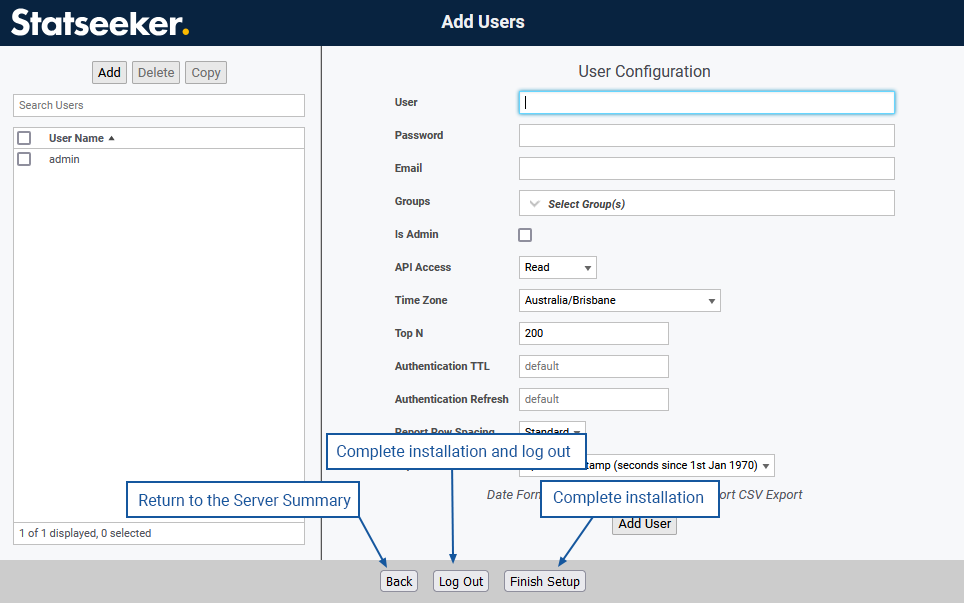
Run Network Discovery
Statseeker's network discovery process is used to add networked devices, interfaces, and other SNMP-enabled components on your network to Statseeker. Statseeker can then collect configuration information and timeseries data from those devices to be used for polling, reporting, and alerting purposes.
Network Discovery
- Click Run Network Discovery
- Click Add A New Range, see IP Address Ranges for assistance
- Expand the SNMP Credentials section and click Add A New Credential
- Configure the SNMP Credentials required to communicate with the devices you wish to monitor (multiple sets of SNMP Credentials can be configured), see SNMP Credentials for assistance
- Click Start Discovery
- The Network Discovery options presented in the installation screen are limited. Additional Discovery modes and a range of options for tailoring Discovery are available, see the Discovery Process for details.
- The Discovery process can take some time to complete, this being dependent upon factors such as the size, speed, and responsiveness of the network and devices
A running Discovery Summary and detailed output Log are updated throughout the process. The server's Discovery history is stored, and available for review or download.
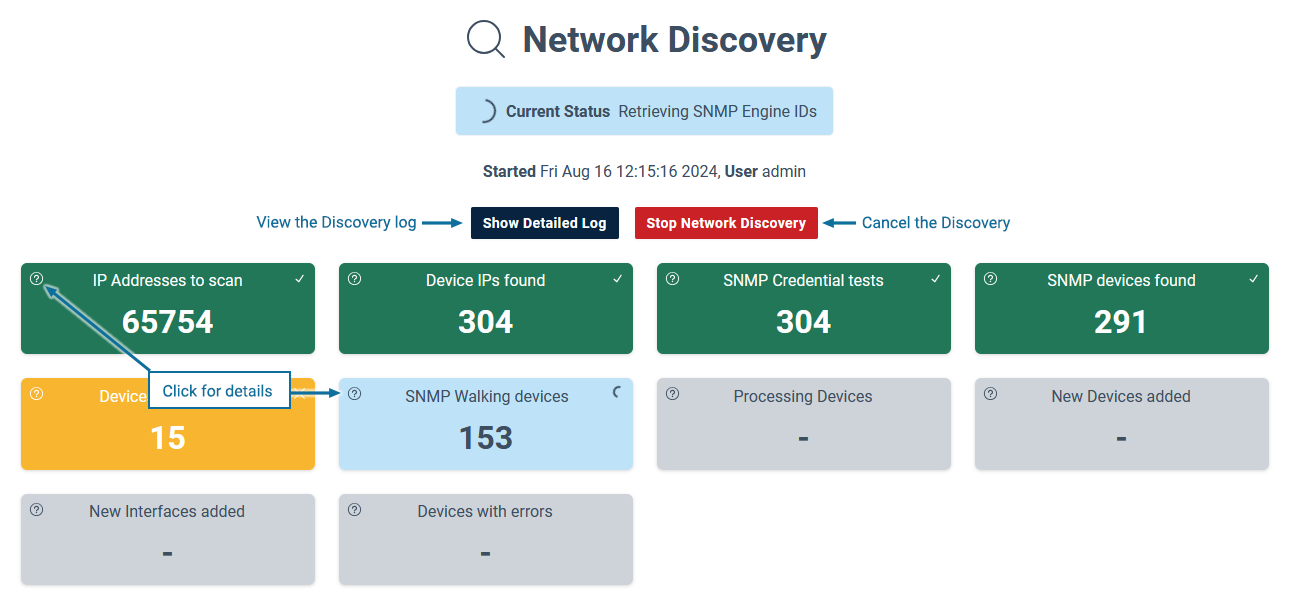
IPv6-Only Networks
The Discovery option available from the installation screen is limited to Discovery Using Ranges, so it is not compatible for IPv6-only networks. For IPv6-only networks:
- Select Administration
- Select Network Discovery - Advanced Options > Hosts File
- Populate the Hosts file with the IPv6 devices to be monitored
- Select Network Discovery > Discovery My Network
- Click the Customize option under Network Discovery
- Set IP Address Ranges > Ranges Source = Use rangers from Hosts file
- Expand the SNMP Credentials section and click Add A New Credential
- Configure the SNMP Credentials required to communicate with the devices you wish to monitor (multiple sets of SNMP Credentials can be configured), see SNMP Credentials for assistance
- Click Start Discovery
Finish Setup
The Statseeker Dashboard Homepage will be displayed providing access to the default dashboards as well as a news panel detailing recent updates with links to associated documentation and videos. The main Statseeker Console and reporting panels are available from the main navigator.
Apply Service Packs
Check for and apply any Service Packs applicable to your version of Statseeker. Contact Customer Support if you require any assistance.
Update Default Passwords
The installation process creates the following administrative system accounts:
- admin - the web user administrator account
- statseeker - the system user account used by the Statseeker application
- root - the superuser account in the backend operating system
You will need to update the passwords assigned to these accounts. To do this:
- Select Administration > Statseeker Administration > OS Configuration
- Click Edit (top-right)
- Update the passwords for the root, statseeker, and admin accounts

